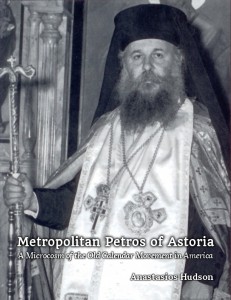The Holy Cross
Dear Friends in Christ,
During September, we celebrated our parish feast day, and a few days later, we celebrated the Holy Cross. We recalled the birth of the Virgin Mary, a miracle in and of itself, as her parents had been unable to conceive until they besought God powerfully in prayer, and then in a few short days, we were transported to Our Lord’s Passion, the culmination of His redemptive work. It is a lot to cover in such a short time!
We remember the Cross on two main occasions during the year; the Third Sunday of Lent, and on September 14/27. The commemoration of the Cross is an event that is rich in Old Testament parallels, but which also has been realized in Church history on three occasions as well. The hymns of the feast point especially to three events in the history of Old Testament Israel: Moses parting the waters of the Red Sea by signing a Cross (Exodus 14:21-29), Moses leading the Israelites to victory over the Amalekites by stretching out his hands in the form of a Cross (Exodus 17:10-14), and Moses curing the snake-bitten idolaters by means of a bronze serpent placed on a pole, in the form of a Cross (Numbers 21:8-9; John 3:14).
In each of these events, we are looking at the events from the present backwards, and interpreting them in the light of the Cross. This would be termed an anachronism, or something outside of chronology, if we were conducting an investigation of secular history. However, the Church has always confessed that the Old Testament prefigures the New, and that in its pages are hints, or foreshadowings, of the events to come. In addition, the Cross is seen as the focal point of history, on which turns the entire history of man. All history before Christ’s Crucifixion was seen as leading up to the great event, and all time since then is seen as our participating in the great event (via our baptism and reception of Holy Communion, which is the making present of this once-and-for-all event).
In Church history, we are aware of several instances of the appearance of the Cross to men. The most well-known event, and pivotal for all of history, not just ecclesiastical, was the appearance of the Cross in 312 to Saint Constantine the Great. At that time, he was a pagan and one of several warring claimants to the imperial throne. The Cross appeared to him in a vision, with the words, “By this sign, conquer.” He placed Christian symbols on the shields of his soldiers, and they were able to defeat the tyrant Maxentius on October 28, 312 at the Battle of the Milvian Bridge. Saint Constantine began to reorder his own life and that of the empire along the lines of Christ’s faith, which turned the course of all Western history.
Also, in 1925, the sign of the Cross appeared in Athens, near Mount Hymettos, during the Vigil for the Cross on September 14. The New Calendar had been implemented in 1924, and a large number of the faithful had remained firmly attached to the Calendar of the Church, which coincided with the Julian reckoning, because this was the Calendar that had been used by the Church all along. The introduction of the New Calendar had created several problems, the most significant of which was that the Orthodox world was now divided in terms of the celebration of feasts. While some were fasting, others were feasting, for instance. Remaining on the Old Calendar was considered a seditious act, and police were sent to the Church to arrest the priest and those present. Thankfully, God blessed those assembled by allowing the Cross to appear over the sky that evening. Many eyewitnesses reported the event, and some of the police sent to arrest the people returned to the Old Calendar themselves.
We have addressed the Old Testament prefigurements of the Cross, and two of the times that the Cross has been seen by Christians in later history. Finally, let us address how Christ Himself speaks of the mystery of the Cross: “Now is the judgment of this world: now shall the prince of this world be cast out. And I, if I be lifted up from the earth, will draw all men unto me” (John 12:31-32). Christ is lifted high upon the Cross; upon wood. In the Garden of Eden, man sinned by eating from a tree, and now, through a tree, Adam’s sin is reversed. But this action has far more than a legalistic connotation; it borrows from a common image known to man.
When we are separated from a loved one for some time, we often find ourselves running to embrace him or her with outstretched arms. This symbol is well-known as representing the almost frenzied expression of love that has not been able to find expression between two people finally being realized. In the same way, Christ’s outstretched arms upon the Cross are seen to parallel this, as His words testify. With outstretched arms, he draws us to Himself.
Now, faithful, let us meditate on this great mystery, and try to comprehend in our life, by thought and deed, how the Cross has freed us from the snares of the enemy, and endeavor to practice a life worthy of the gift Christ has given us!
In Christ,
Fr. Anastasios


